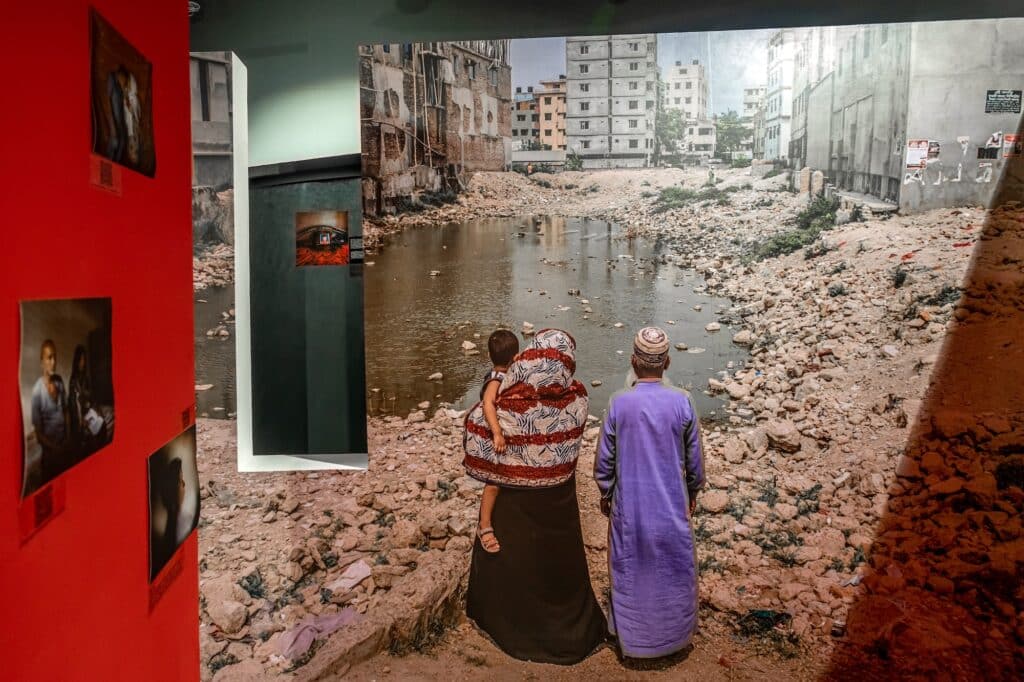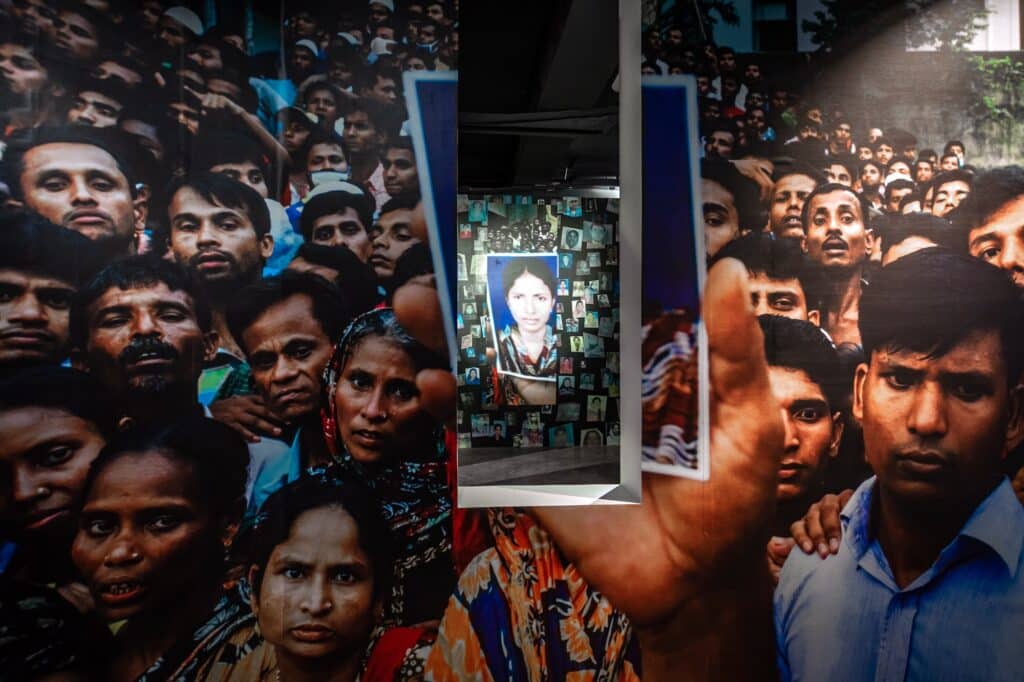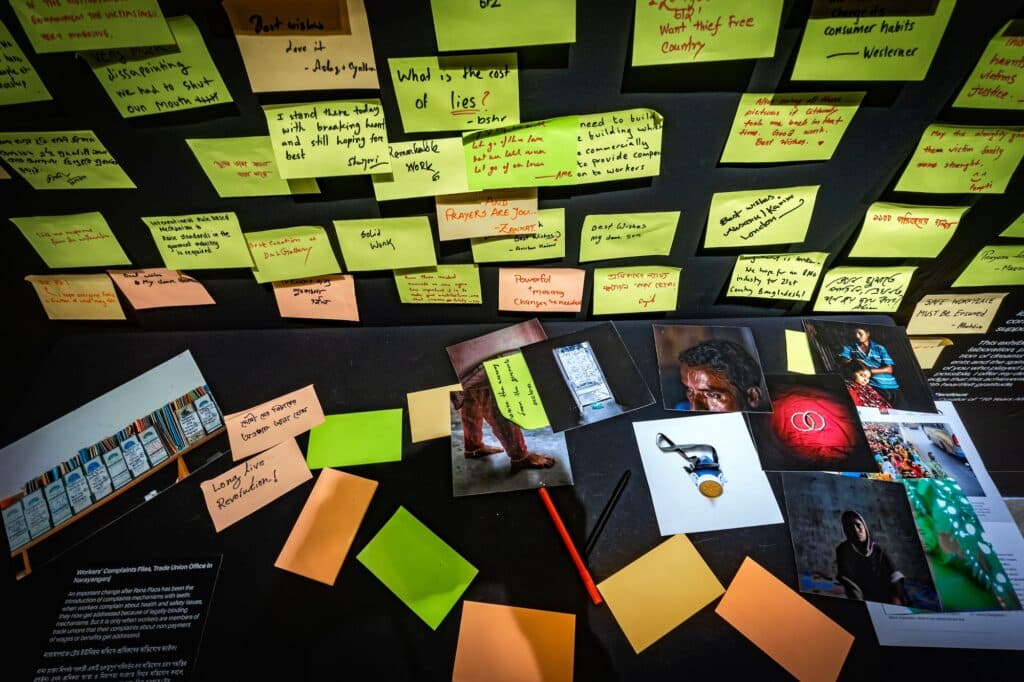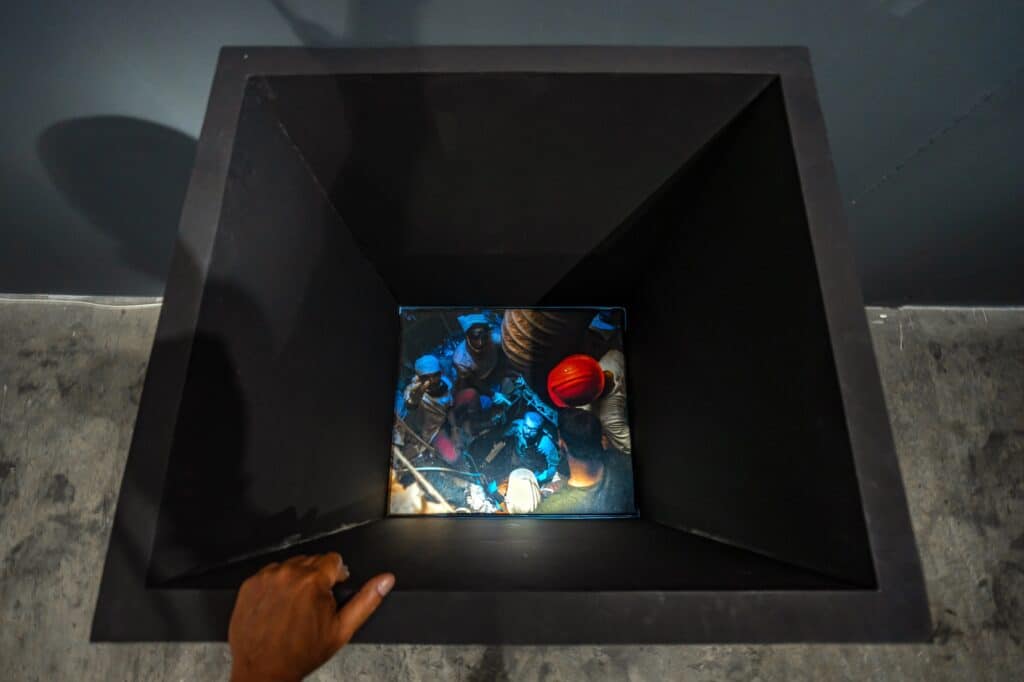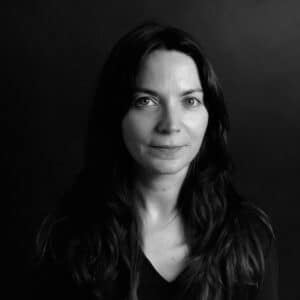On April 24, 2013 an eight story commercial garment-factory collapsed in Rana Plaza, Bangladesh resulting in over 1100 deaths and more than 2000 missing. Photographer Ismail Ferdous was there on the ground to document the worst disaster in Bangladesh’s garment industry. He photographed harrowing scenes of rescue workers and volunteers frantically uncovering those buried in the rubble. At one point he even put his camera down to help in the rescue.
As a native Bangladeshi this disaster struck a personal chord. He remembers as a young child seeing masses of people commuting to the garment factories every morning through the streets of Dhaka. This was at a time when Bangladesh was the world’s top ready-made garment (RMG) producer. When Rana Plaza collapsed, he felt a strong calling to document the disaster and the days and long nights that followed. His images of family members scattered throughout the rubble holding photos of their loved ones became the hard evidence of this event. The images were published in major New papers and initially distributed by AP associated Press and now is available on Agence Vu, his photo agency site.
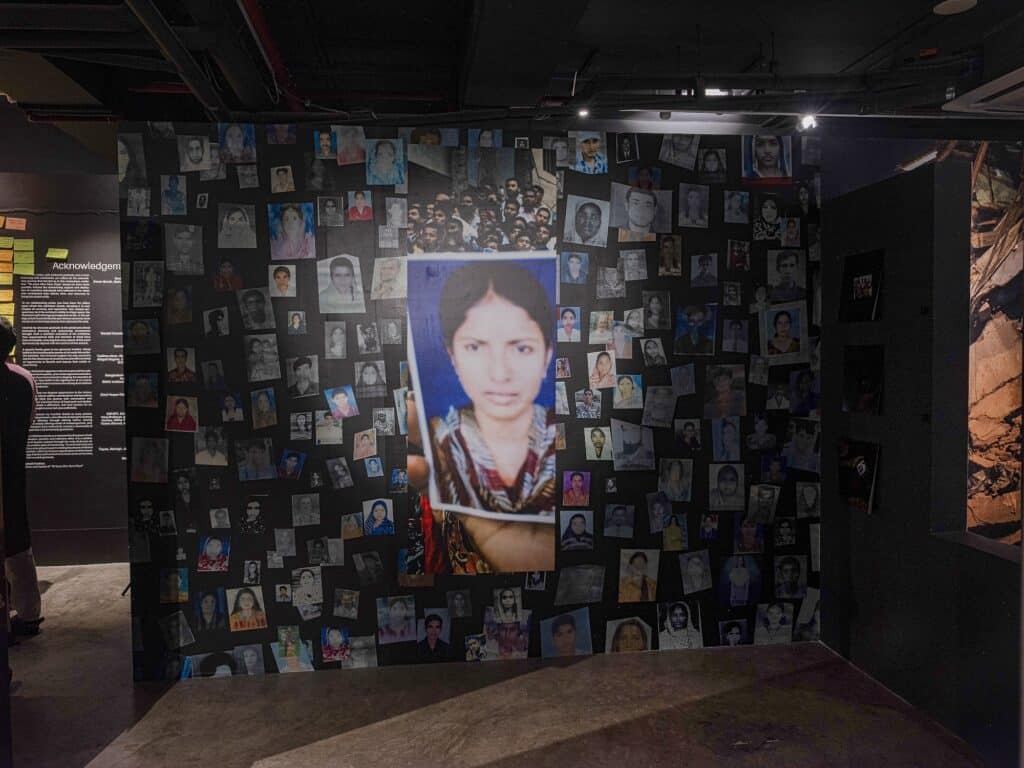
Journey of his project after the collapse
Naturally with a project of this scale, it has taken many forms over the last ten years. During the one-year anniversary of the collapse in 2014 the NY Times Op-Docs released the film “Deadly Cost of Fashion” made in collaboration with Nathan Fitch. This film highlights Ismail Ferdous’ journey from covering the day of the collapse and his investigation of the problems surrounding the conditions in the factories supplying the American market with cheap fashion. Those brands and companies linked to the Rana Plaza factories are highlighted in the film.
Now in its latest rendition as a virtual exhibition viewers can see the physical exhibition that was on view in June 2023 in Dhaka. The exhibition was initiated by group of people at American University, Accountability Research Center, BRAC (Not BRAG) , as well as Naomi Hossain’s family and friends as a private donor. This came after the publication of a research paper with political sociologist and research professor, Naomi Hossein, from the American University, “ Picturing accountability, what we learn from photography of the Rana Plaza disaster”. Ismail Ferdous’ investigation highlights a lot of concerns about the conditions and pressure that local authorities and workers face in order to meet the demands of the international market.
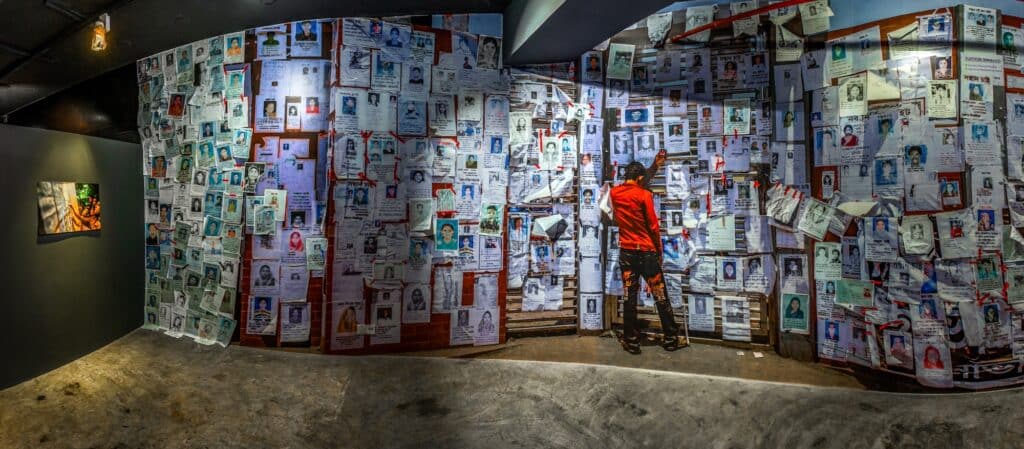
Virtual and In-person Exhibition in Dhaka
What struck me in my conversation with Ismail Ferdous was his very personal connection to the subjects. He clearly stated that he was making this project for his native Bengali people and his photographs serve as the voice of those affected by this tragedy.
His self-curated exhibition exemplifies an innovative approach in documentary photography and brings so much of what is emphasized in the paper to life. “The exhibit is not only a photo show, but also a journey through 10 years after the collapse of Rana Plaza. I wanted to focus on human empathy and command the viewer’s attention to the subjects”, says Ismail Ferdous.
While the images themselves are powerful they take on a whole different meaning within the exhibition. Careful thought and deliberate choices went into the design, sequencing and curation. Working with an Architecht-Farhana Nizam Chowdhury, each section is built to represent different chapters of the project. It starts off asking the viewer to move through the space in silence.
His decision to create darkness and meandering corners are meant to disorient the viewer and create a sense of unease. According to Ismail Ferdous, “if someone goes there and they leave with such an uncomfortable feeling that they would not like to go back then it’s effective, meaning you are living with something.”
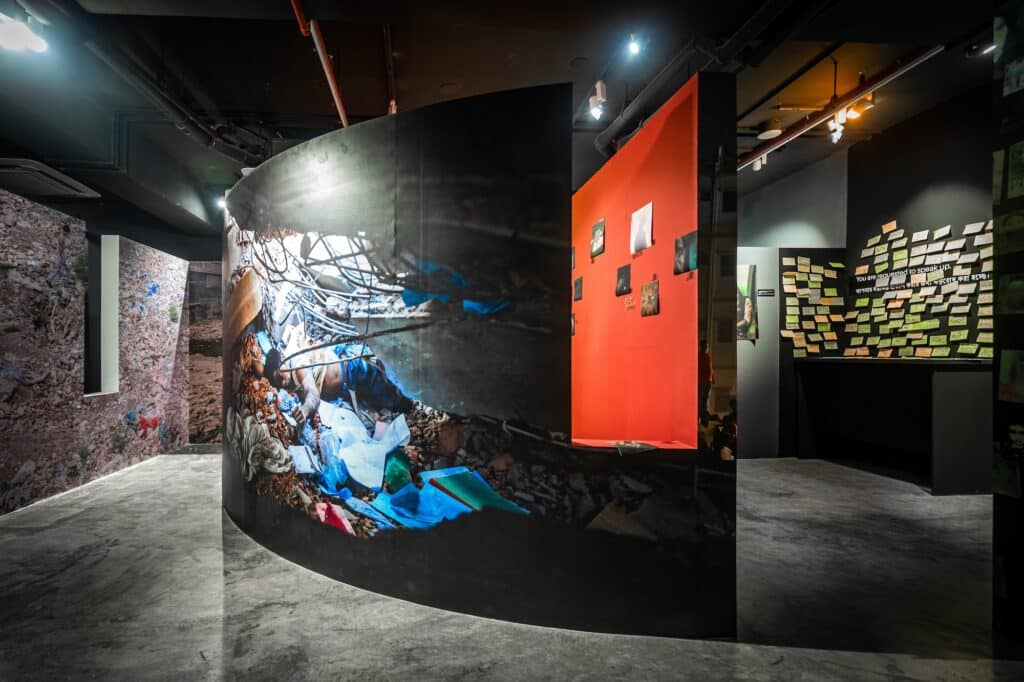
Another innovative aspect of the exhibition is his collaboration with other Bangladeshi artists.Not only did he invite architects to help design and build the exhibition space, but also collaborated with an artist to recreate the mural of the missing persons wall. At the time of the collapse, people had posted pictures on the wall of a local school which also served as a makeshift morgue. This wall stretched for two miles long. By recreating the wall it was Ismail Ferdous’ intent to let the viewer experience what the people affected by the tragedy went through. The viewer is no longer just a spectator but becomes an active participant in the space.
At the end of the exhibition he welcomes viewers to write or leave audio messages. When asked to describe what some of the most common feedback was, Ismail Ferdous explained that the exhibition seemed to provoke self-examination and even a sense of guilt among viewers. They questioned their own moral compass and expressed regret around how workers in the industry are treated and how they are almost invisible to the public.
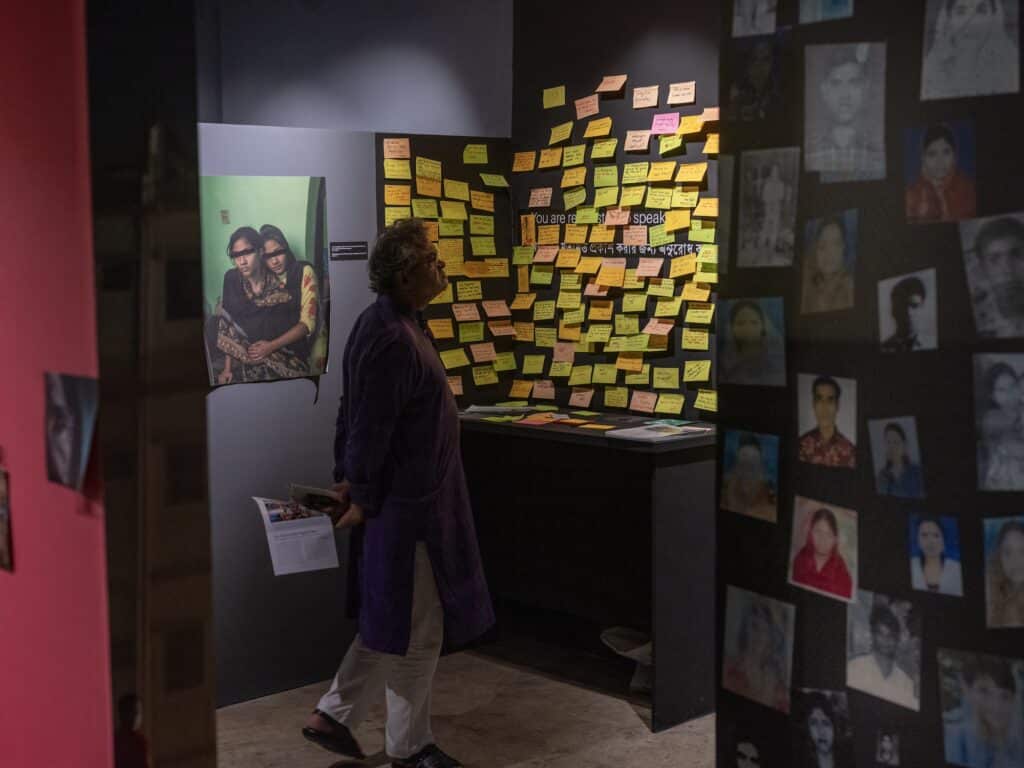
Forming public opinion
Ismail Ferdous’ project is a very good example of how doc photography coupled with an innovative approach can bring issues that seem underrepresented to the forefront. In today’s media the focus is on immigration and migrants, environmental degradation and major world conflicts. This work draws attention to some of the other less visible problems and uncomfortable truths of our global economy and demand for cheap fashion. It was during New York’s fashion week in 2014 that his photographs were part of popular protests. In collaboration with THE ILLUMINATOR, Ismail projected his work from Rana Plaza collapse on the Lincoln center building and another at the Children’s Place clothing store ,who refused to pay compensation to the victim Rana Plaza, in Midtown.
While the show gives voice and a sense of dignity to those affected by the tragedy, Ismail Ferdous is well aware that policy change will not come about from the workers themselves but from people in positions of power and influence. His exhibition intended to reach and provoke the educated middle and upper class of Bangladesh into action and it succeeded in doing so by drawing attention from major public figures including Dr. Kamal Hussain, a leading politician and founding father of the Bangladeshi constitution, who visited the exhibition with his family.
Even 10 years later the effect of the Rana Plaza collapse continues to be part of a broader conversation about the global economy and the attempt of holding those in power accountable for ensuring safe and fair working conditions for the garment workers. Ismail Ferdous’ project is an example of how photography can be instrumental in forming public opinion and forcing change.
After Rana Plaza is a collaborative project between Bangladeshi photographer Ismail Ferdous and The Embassy of the Kingdom of the Netherlands.

